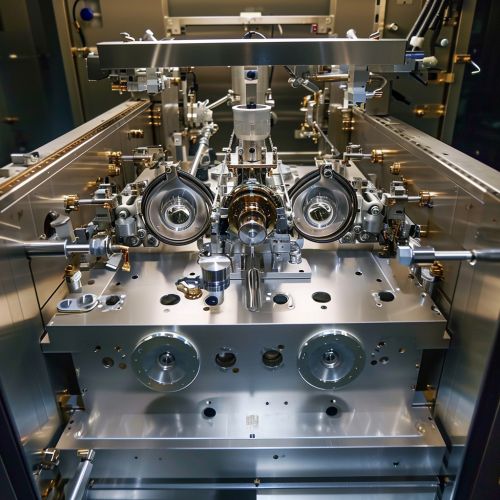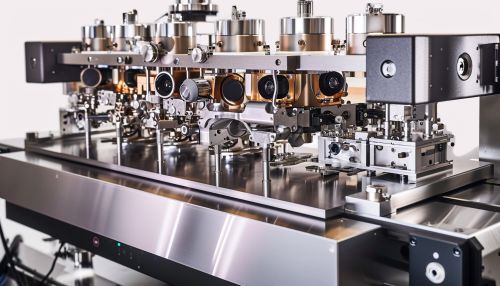Titanium-sapphire laser
Introduction
The Titanium-sapphire laser is a type of solid-state laser that uses a titanium-doped sapphire crystal as the gain medium. This laser is tunable over a broad range of wavelengths, making it a versatile tool in various scientific research fields, such as spectroscopy and quantum optics.
History
The development of the titanium-sapphire laser can be traced back to the 1960s, when the first laser systems were being developed. The first titanium-sapphire laser was built in 1982 by Peter Moulton at the MIT Lincoln Laboratory. The laser's wide tuning range and high peak power made it an immediate success in the scientific community.
Design and Operation
The titanium-sapphire laser operates by using a titanium-doped sapphire crystal as the gain medium. The titanium ions in the crystal are excited by a pump source, typically another laser, and emit light as they return to their ground state. This emitted light is then amplified within the laser cavity to produce a coherent beam of light.


The laser cavity of a titanium-sapphire laser typically consists of two mirrors, one fully reflective and one partially reflective, which form an optical resonator. The titanium-doped sapphire crystal is placed inside this resonator, and the pump laser is directed into the crystal to excite the titanium ions.
The titanium-sapphire laser is tunable, meaning that the wavelength of the light it emits can be adjusted. This is achieved by using a birefringent filter or a prism inside the laser cavity, which selectively transmits certain wavelengths of light. By adjusting the angle of this filter or prism, the wavelength of the laser light can be tuned over a broad range.
Applications
Due to its wide tuning range and high peak power, the titanium-sapphire laser has found numerous applications in scientific research. One of the most common uses of this laser is in spectroscopy, where it is used to study the properties of atoms and molecules. The laser's tunability allows researchers to selectively excite specific energy levels in the atoms or molecules, providing detailed information about their structure and behavior.
The titanium-sapphire laser is also widely used in the field of quantum optics, where it is used to manipulate and study quantum states of light. The laser's high peak power and short pulse duration make it ideal for experiments involving quantum entanglement and quantum information processing.
In addition, the titanium-sapphire laser is used in biomedical imaging, particularly in the technique known as two-photon microscopy. In this technique, the laser's short pulses and high peak power allow for the imaging of living tissues at high resolution and depth.
Future Developments
As technology continues to advance, the titanium-sapphire laser is expected to find new applications and improvements. One area of research is in improving the efficiency and power output of the laser, which could open up new possibilities in fields such as laser surgery and materials processing.
Another area of research is in extending the tuning range of the laser. While the titanium-sapphire laser already has a broad tuning range, there is ongoing research into methods of further extending this range, which could make the laser even more versatile in its applications.
